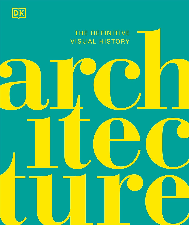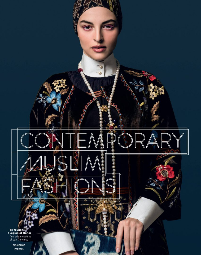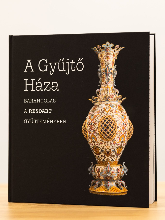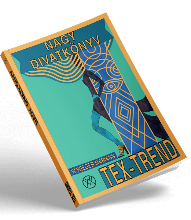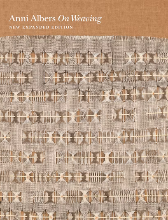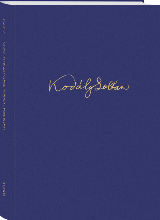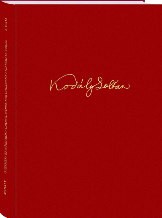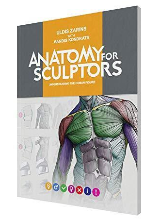Könyvajánlók
Architecture : the definitive visual history
Barnabas Calder
Covering over 6,000 years of human history, Architecture charts the most
important developments in building materials, technology, and design,
and the social changes that have shaped the architectural landscape.
Explore
every significant architectural period and style in depth through key
examples. Take a tour of some of the world's most iconic buildings,
beautifully illustrated with a combination of stunning photography and
specially commissioned CGI artworks. Find out why so many ancient Roman
structures have withstood the test of time. Learn how the soaring
ceilings of Gothic cathedrals are held up. And discover the
architectural innovations that are helping to combat climate change.
Comprehensive,
authoritative, and inspiring, Architecture is the perfect book for
anyone fascinated by the built world - its visual character and the
factors that have formed it - and who wants to understand more.
tovább >>>
Contemporary Muslim fashions
Jill d'Allesandro and Reina Lewis
This dazzling exploration of contemporary Muslim modest dress, from historic styles to present-day examples, accompanies a major exhibition and reveals the enormous range of self-expression through fashion achieved by Muslim men and women. Filled with documentary and fashion photography as well as stills from runway shows and the media, this book explores the ways Muslim style cultures are shaped by global trends and religious beliefs. From high-end couture to streetwear, this volume shows how established and diaspora regions, such as Dubai, Jakarta, London, and New York, are homes to thriving industries that create classic and cutting-edge looks. Accompanying these images are essays and personal narratives by leading voices that touch on everything from the history of modest dress to social media. A fascinating examination of a major segment of the fashion industry, this book highlights the ingenuity and creativity of Muslim designers and wearers as they deftly navigate the fashion industry while maintaining their religious and cultural identities.
tovább >>>
Art : the definitive visual history
ed. consultant Andrew Graham-Dixon
Discover all you need to know about art history in this definite guide. Art: The Definitive Visual Guide brings a gallery of more than 2,500 of the world's finest paintings and sculptures into your home.
Spanning
30,000 years, from cave paintings to contemporary art, this stunning
chronological exploration of every major artistic movement introduces
the major milestones of each period, from the tomb paintings of Ancient
Egypt, Qing Dynasty Chinese art, through to 20th century Cubism and
African art today...
tovább >>>
The collector's house : discovering the Resoart collection
Fedezze fel A Gyűjtő Háza varázslatos világát, amely a ResoArt Villa páratlan műkincseinek lenyűgöző világába kalauzolja el az olvasókat. Ez a különleges kiadvány a Zsolnay kerámiák finom részleteit és a szecessziós művészet varázsát hozza közelebb az olvasókhoz, miközben betekintést nyújt a villa építészeti és történeti hátterébe is.
Lapozzon bele ebbe a gyönyörűen illusztrált albumba, és fedezze fel a
műgyűjtés izgalmas világát Szabó András egyedi perspektíváján keresztül!
Az album tökéletes választás
művészetszeretőknek, gyűjtőknek, vagy akár ajándékként is, hogy
továbbadhassuk a szecesszió és a Zsolnay művészet iránti rajongásunkat.
tovább >>>
Nagy divatkönyv
Miért készült a könyvem?
Életem során voltam grafikus, festő, divattervező, üzletasszony, tanár és most könyvem írója, szerkesztője és tördelője.
Egy
mondatban, alkotói vágyaimat és képességeimet piacképessé tudtam tenni.
Reményeim szerint, példa lesz munkásságom sok bátortalan tehetségnek!
Célom az iránymutatás.
tovább >>>
Feltakarás : [dekollázsok] : [Műcsarnok, ... 2024. július 19. - október 6.]
Géczi János
A feltakarás szót Visky András Géczi János kiállítása elé írt szövegéből kölcsönöztük.
Ezekben a munkákban egyszerre van jelen az eltakarás és a feltárás mozzanata. Az eredeti jelentések kitakarásra kerülnek, kiüresednek, a talált tárgy megfosztódik bármilyen konkrét jeltől, amely jelentést hordozhatna, kapaszkodót nyújthatna az értelmezéshez. Másrészt a rétegek feltárásával a romlás, az átváltozás, az idődimenzió válik láthatóvá és vizsgálhatóvá. A művek köztes állapotot állandósítanak: a fosztás, roncsolás révén (akár véletlenszerűen) új jelek, mintázatok jelennek meg, amelyek új rendszerré, jelentéssé, képpé szerveződnek – mintha a szétesés és újraszerveződés kimerevített pillanatának tanúi lennénk. Hogy ez a pillanat a nyelv, a művészet, a kultúra vagy az egész civilizáció, netán az ökoszisztéma vagy a világegyetem működésének törvényeiből mutat fel valamit számunkra, az rajtunk, nézőkön múlik...
tovább >>>
On weaving
Anni Albers
Written by one of the twentieth century’s leading textile artists, this
splendidly illustrated book is a luminous meditation on the art of
weaving, its history, its tools and techniques, and its implications for
modern design. First published in 1965, On Weaving bridges the
transition between handcraft and the machine-made, highlighting the
essential importance of material awareness and the creative leaps that
can occur when design problems are tackled by hand.
With her
focus on materials and handlooms, Anni Albers discusses how technology
and mass production place limits on creativity and problem solving, and
makes the case for a renewed embrace of human ingenuity that is
particularly important today. Her lucid and engaging prose is
illustrated with a wealth of rare and extraordinary images showing the
history of the medium, from hand-drawn diagrams and close-ups of
pre-Columbian textiles to material studies with corn, paper, and the
typewriter, as well as illuminating examples of her own work.
tovább >>>
Párnakönyv [Ráthonyi Kinga szobrai]
"Nekem, amikor megtudtam, hogy Ráthonyi Kinga új kiállításának Párnakönyv
lesz a címe, rögtön bevillant a habos-bolyhos felhőzeten heverésző,
abba burkolózó, eget látó, ébredező, aztán még egy kicsit visszaalvó
angyal. Illetve először Szei Sónagon, japán udvarhölgy ezer évvel
ezelőtt írott Párnakönyve jutott eszembe, arról villámgyorsan
maga az egész Távol-Kelet, és aztán elképzeltem Kingát, ahogy ül a
repülőn hazafelé a Kínai-alföld fölött, és nézi a lenti, zárt
felhőzetet. Hoz magával gondosan elcsomagolva piros, fekete és arany
tusokat, gyönyörű tisztafehér és mintázott rizspapírokat, a fejében
pedig új tudásokat a porcelán soha ki nem ismerhető természetéről,
végtelenül bonyolult pszichéjéről. De nevezhetjük ezt az anyagot akár
nárcisztikusnak is: soha nem lehet tudni, hogy mi bújik majd elő a
kemencéből, mi roskadt magába odabent, melyik nagy gonddal megformált
szobor vett fel egy olyan alakot, ami a szobrászt kétségbe ejti. A
porcelán kijön a kemencéből, és hetykén odaveti szobrászának: szeress
így, vagy dobjál ki, engem aztán nem érdekel. De te vagy a felelős! "
(Kemény István, költő)
tovább >>>
Percepció és reveláció : művészeti felsőoktatás Pécsett, 1996-2025
[... szerk. ... Tóth Eszter]
Interjúkötet
jelent meg a Pécsi Tudományegyetemen csaknem három évtizede megalakult
Művészeti Karról. A "Percepció és reveláció" című könyv beketintést
nyújt az alapítók élettörténetébe, a kar fejlődésének folyamatába. Az
interjúkból kirajzolódik gondolkodásmódjuk, élettörténetük, művésztanári
szemléletük. A Művészeti Kar művésztanárai arra hívják az olvasót, hogy
hogy kibővítse a Művészeti Karhoz fűződő emlékeinek, kötelékeinek,
vízióinak tárházát és a személyes történeteken keresztül közvetlenül
kapcsolódhasson hozzájuk. A könyvbemutatón elhangzott, hogy a Pécsett
élő és alkotó képző- és zeneművészek alapítókként segítették a Művészeti
Kar létrejöttét, mely a jogelőd intézmények, a Janus Pannonius
Tudományegyetem Tanárképző Főiskolai Kar Rajz Tanszéke és a Liszt Ferenc
Zeneművészeti Főiskola pécsi tagozatának egyesítéséből 1996-ban
alakult. A Művészeti Kar alapításában kiemelkedő szerepe volt Keserü
Ilona festőművésznek, Bencsik István, Rétfalvi Sándor
szobrászművészeknek és Schrammel Imre keramikusművésznek, akik
létrehozták a Mesteriskolát és elsőként az országban elindították a
művészeti doktori képzést. A majd három évtized alatt a Művészeti Kar
hazánk egyetlen felsőfokú zenei, képzőművészeti és alkalmazott, illetve
médiaművészeti képzést és kutatást integráltan folytató központjává
vált. A Művészeti Kar által képviselt összművészeti koncepció
egyedülálló hazánkban, a karon folyó művészeti képzések nemcsak a hazai
felsőoktatási palettán képviselnek kiemelkedő színvonalat, hanem már
nemzetközi szinten is.
tovább >>>
Kodály Zoltán: Férfikarok
Kodály Zoltán
KODÁLY ZOLTÁN (1882-1967) zeneszerzőként, pedagógusként és népzenekutatóként egyaránt jelentős életművet hagyott hátra: a 20. századi magyar zene egyik legnagyobb hatású alakja volt. Több mint 130 a cappella kórusművével a modern magyar kórusirodalom megteremtője. Kodály kórusművei három kötetbe gyűjtve jelentek meg:
Gyermek- és nőikarok (Z. 6724)
Vegyeskarok (Z. 6725)
Férfikarok (Z. 6726)
A férfikarok jelen, bővített és átdolgozott kiadása 30 kompozíciót tartalmaz, melyek közül hat a korábbi kiadásokban nem jelent meg. A férfikarok mind ez idáig legteljesebb és leghitelesebb szövegű kiadása új, egységes elvek alapján szerkesztett, jól olvasható és igényes megjelenésű kottagrafikával, valamint informatív utószóval jelenik meg.
tovább >>>
Gyermek- és nőikarok
Kodály Zoltán
KODÁLY ZOLTÁN (1882-1967) zeneszerzőként, pedagógusként és népzenekutatóként egyaránt jelentős életművet hagyott hátra: a 20. századi magyar zene egyik legnagyobb hatású alakja volt. Több mint 130 a cappella kórusművével a modern magyar kórusirodalom megteremtője.
Kodály kórusművei három kötetbe gyűjtve jelentek meg:
Gyermek- és nőikarok (Z. 6724)
Vegyeskarok (Z. 6725)
Férfikarok (Z. 6726)
A gyermek- és nőikarok jelen, bővített és átdolgozott kiadása 59 kompozíciót tartalmaz, melyek közül három a korábbi kiadásokban nem jelent meg. Az egyneműkarok mind ez idáig legteljesebb és leghitelesebb szövegű kiadása új, egységes elvek alapján szerkesztett, jól olvasható és igényes megjelenésű kottagrafikával, valamint informatív utószóval jelenik meg.
A kötet papírborítású és vászonkötésű kiadásban is megjelent.
tovább >>>
